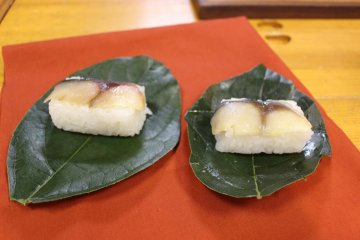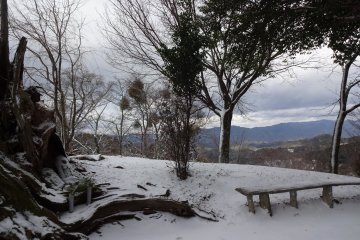Yoshinoyama in winter does not see many visitors but if you love nature, temples and shrines, walking and eating, then you will enjoy a weekend here in January or February.
Here you will find the Zao Do, the main hall of Kinpusen-ji Temple. The large wooden structure visible from afar is Japan's second largest wooden building after Todai-ji Temple in Nara City. How about joining the Yamabushi monks at their morning or evening prayer at the Zao-do temple hall?
Don't miss the Setsubun (welcoming of spring) celebrations on Yoshino Mountain on February 3! The Setsubun celebrations here are quite unique because the oni demons are not thrown out of the house but invited in, literally. During the Oni Fest "Oni" roam around the streets of Yoshinoyama in the evening of Setsubun and they go into accommodations and restaurants and scare not only the local kids but also some visitors with their rowdy behavior. After all, Oni don't behave well and they always cause a lot of laughter on part of the adults and tears for kids.
A perfect time for a quiet retreat on top of this 350m mountain, which is the gateway to the Okugakemichi, an ascetic training trail for Yamabushi mountain monks. Located on a mountain ridge, some walks around Yoshinoyama are on flat ground whereas others involve walking up some steep mountain slopes. While some visitors prefer walking around in the village and visit several temples there, some others might want to hike up further into the mountains and visit Kimpu-jinja Shrine and Mikumari Shrine.
Yoshinoyama is famous for cherry blossoms in spring. In fact, Yoshinoyama is THE top sakura spot in Kansai.
Yoshinoyama and the Okugakemichi trail, as well as the Kumano Kodo and Koyasan, are part of the UNESCO World Heritage Site "Sacred Sites and Pilgrimage Routes in the Kii Mountain Range" inscribed in 2004.


















